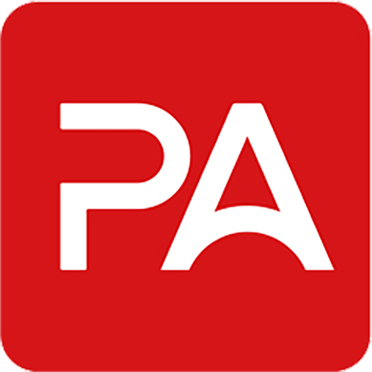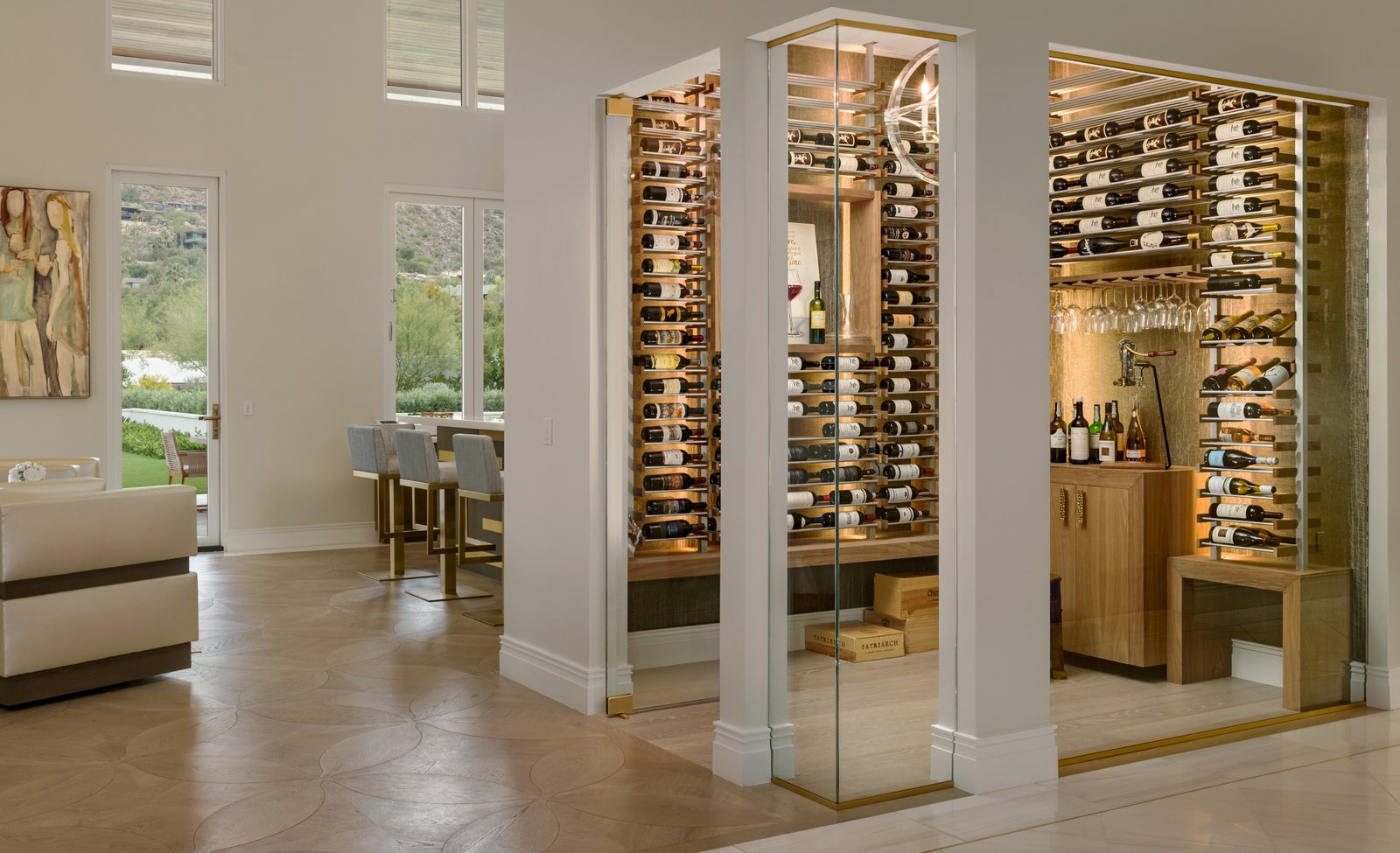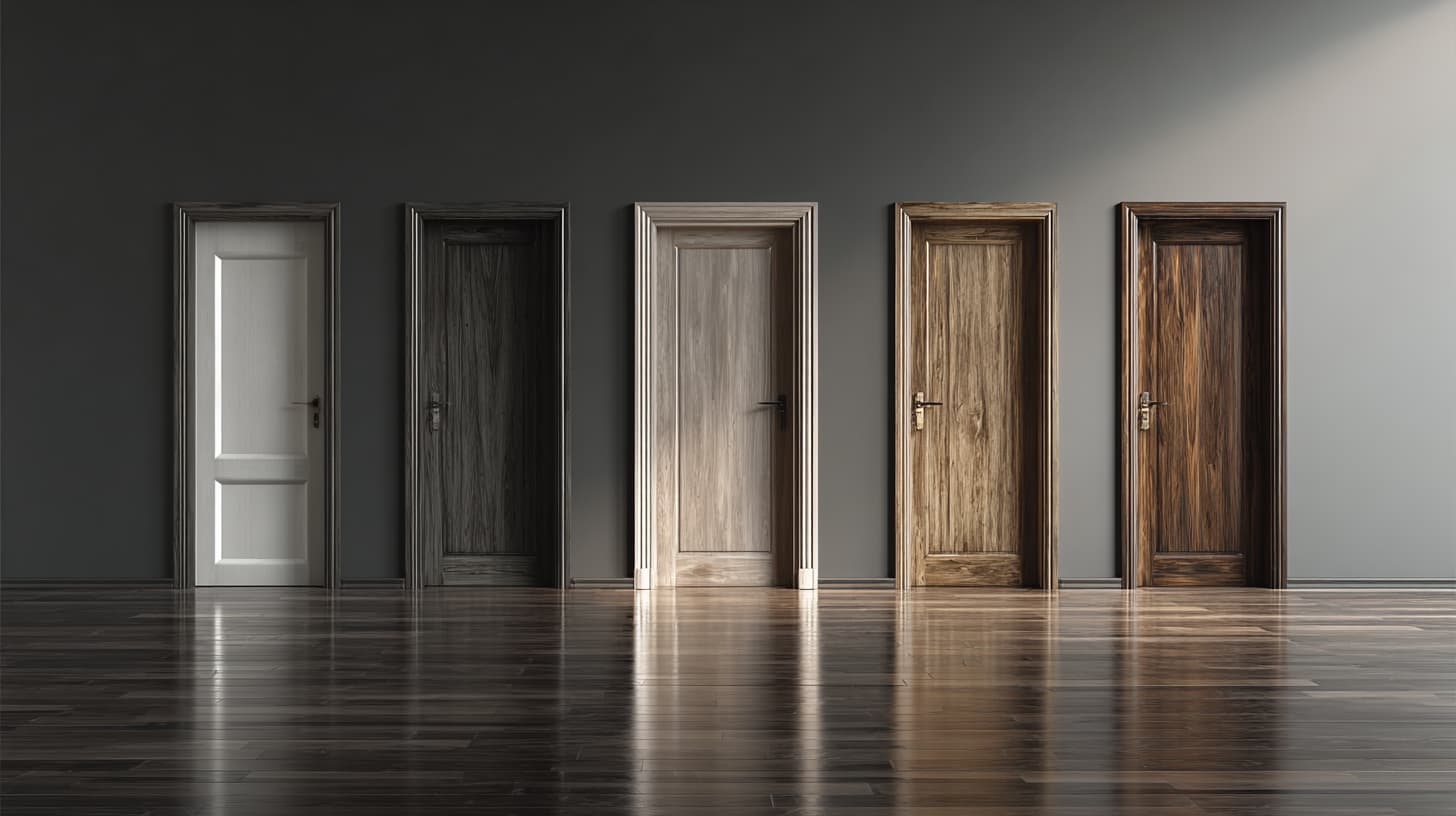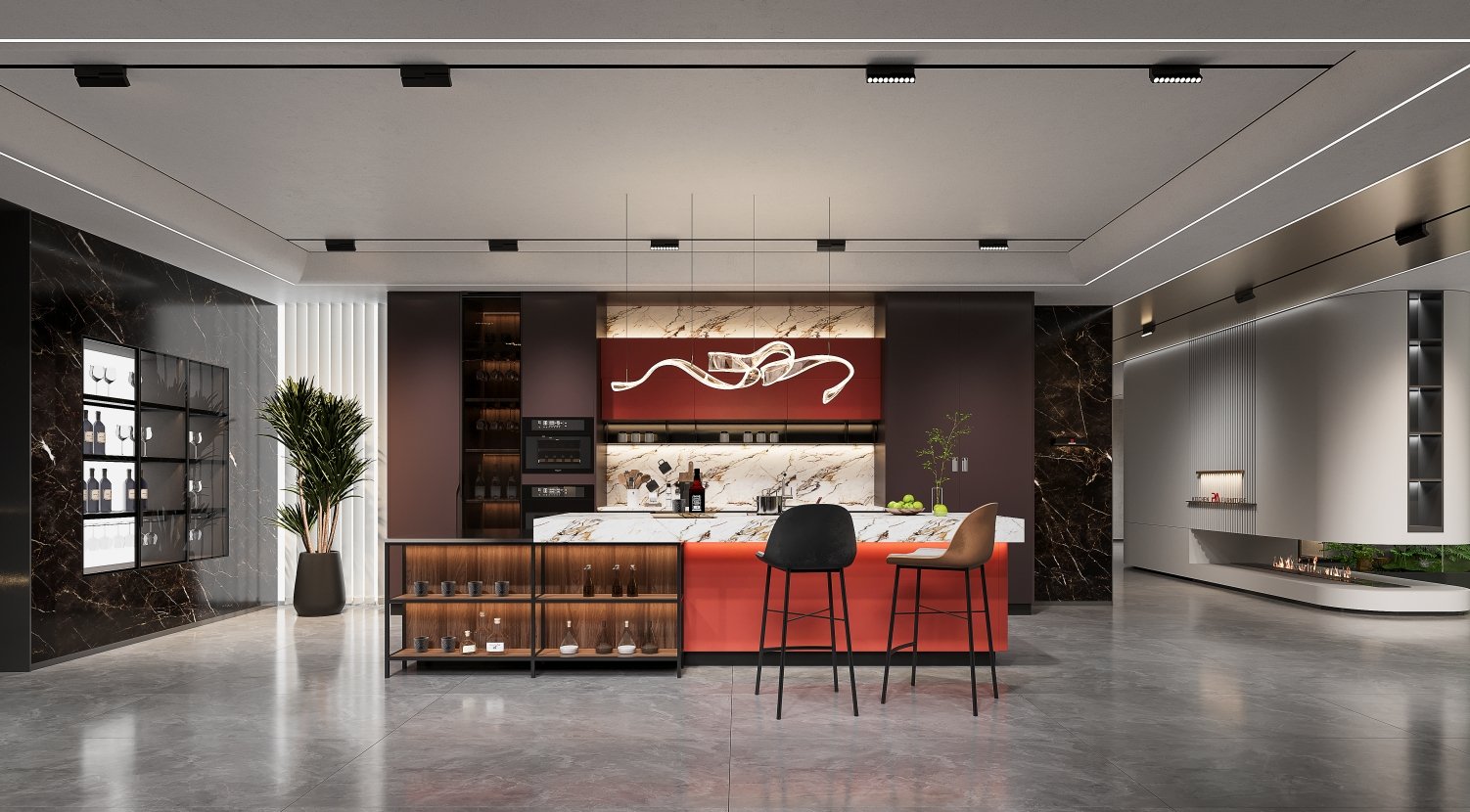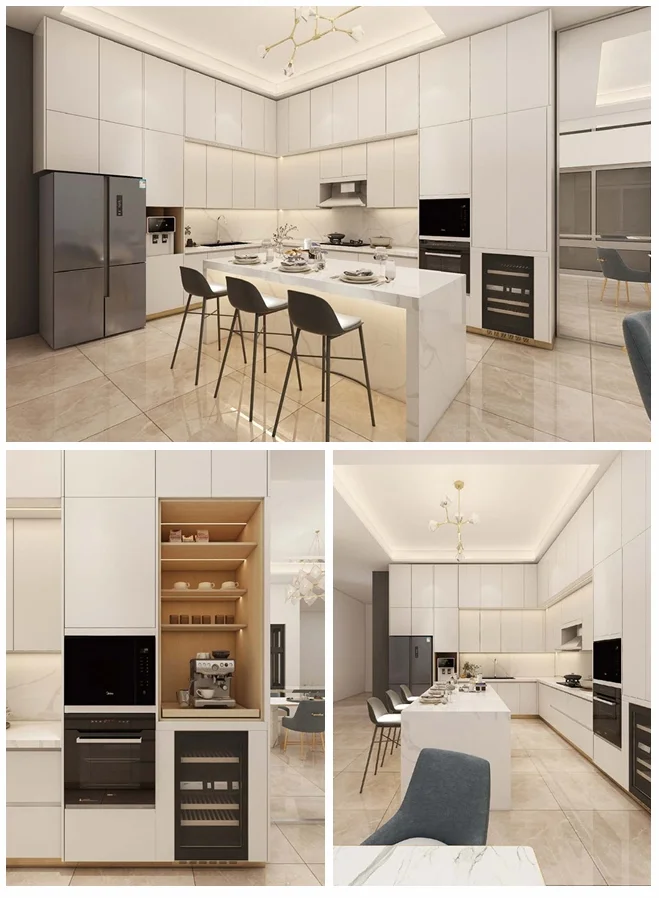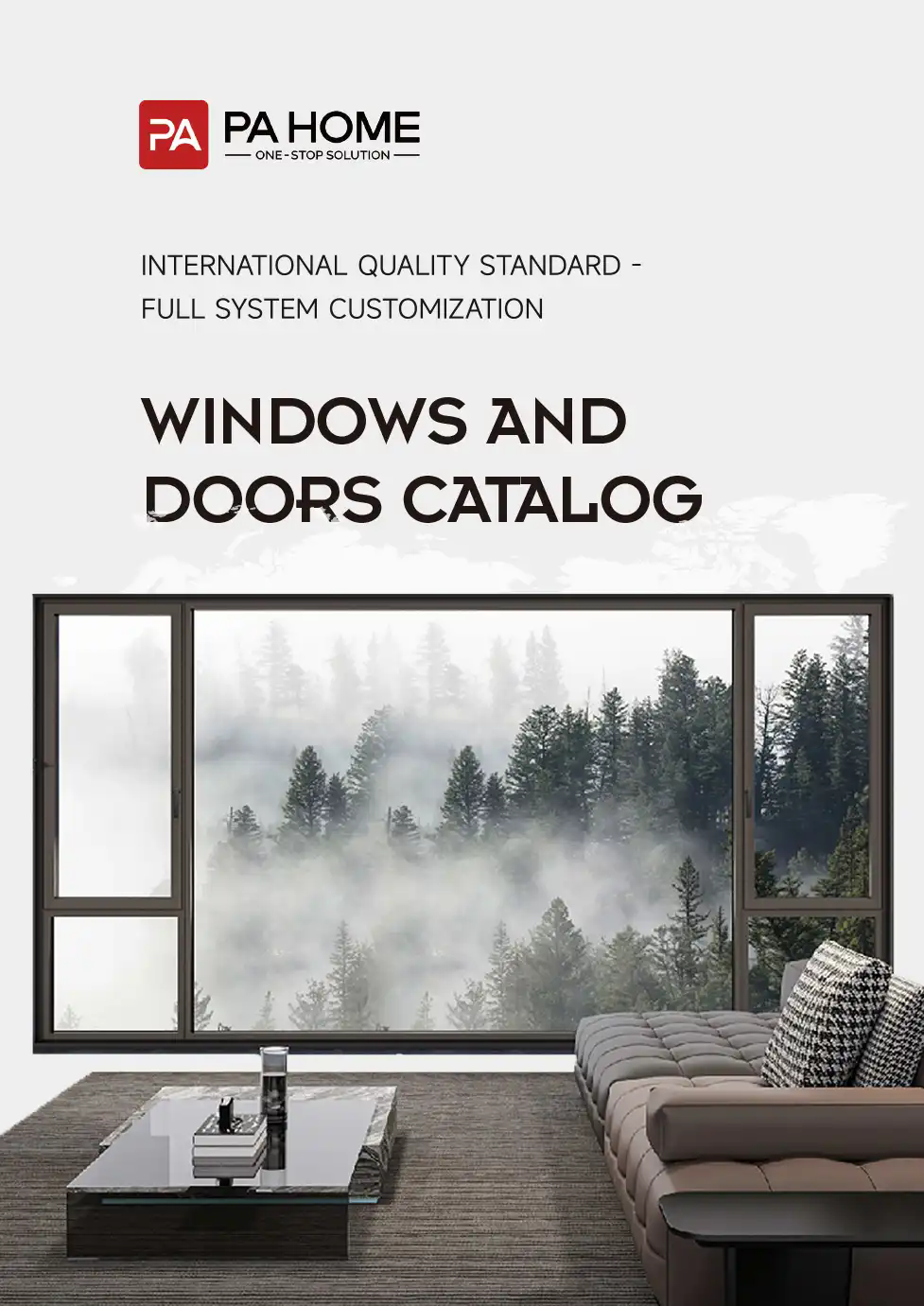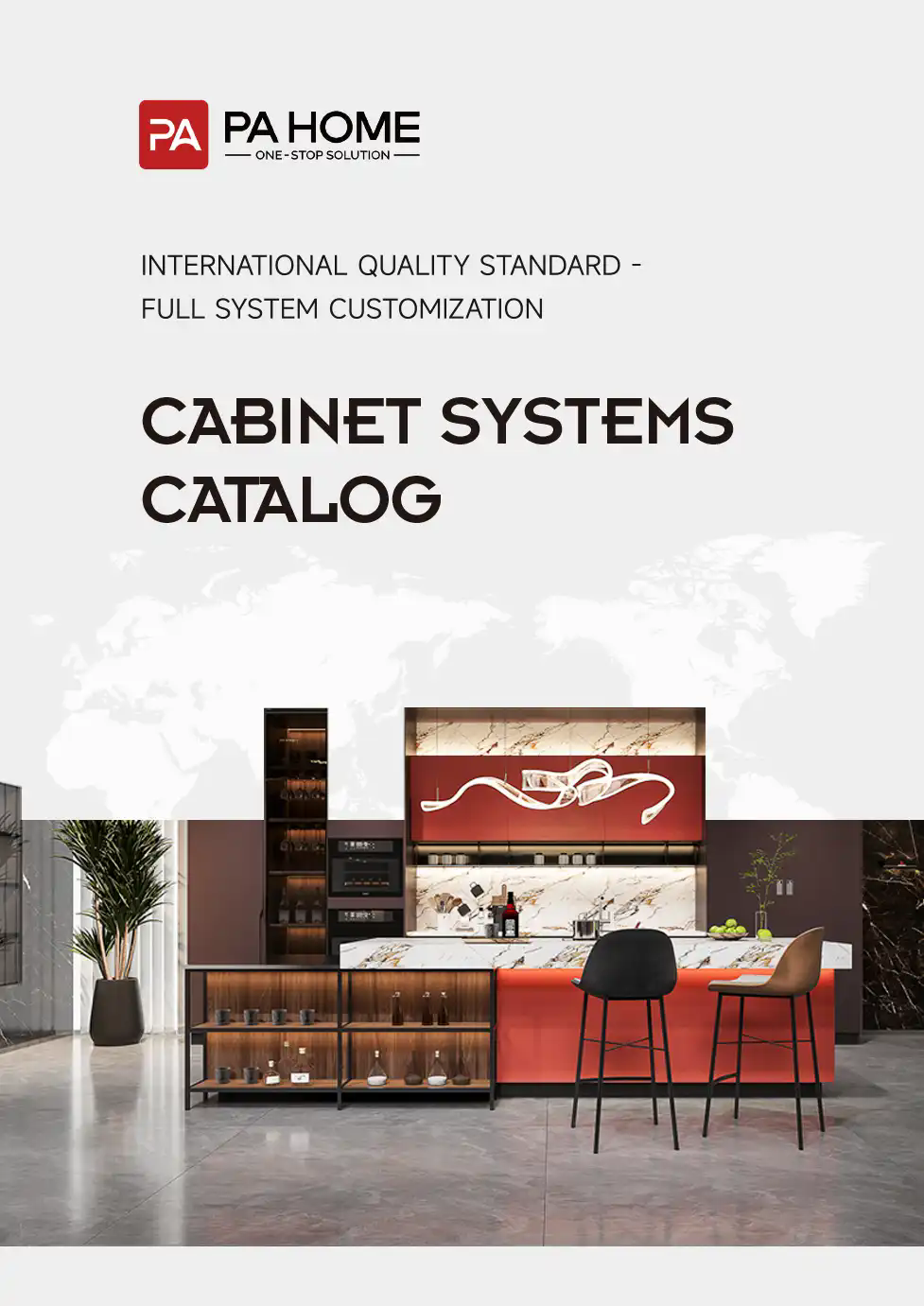When you’re designing your home, whether it’s a kitchen remodel or building custom furniture, one of the most important decisions you’ll face is choosing the right material. Particle board and plywood are two of the most commonly used materials in furniture making, but how do you know which one is best for your needs? Let’s dive into the key differences between particle board vs plywood to help you make an informed decision.
What is Particle Board?
Particle board is made from wood chips, sawdust, and shavings bonded with resin and compressed under heat and pressure. It’s one of the most affordable materials, ideal for budget-conscious projects.
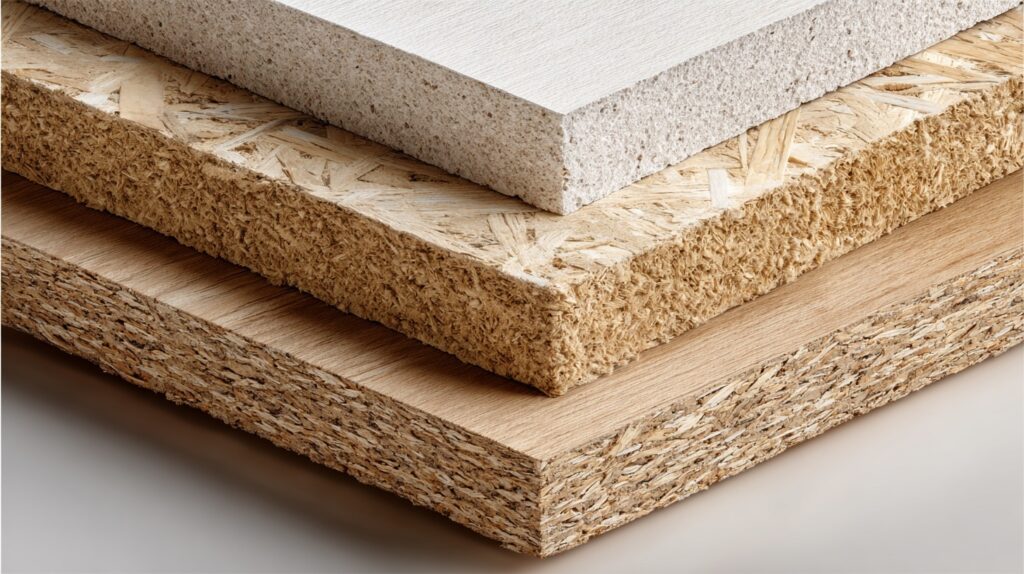
Pros of Particle Board
Cost-Effective: Particle board is highly affordable, making it a popular choice for furniture that doesn’t need to carry a hefty price tag.
Lightweight: Since it’s made from compressed wood chips, particle board is lighter than other solid wood materials, making it easier to handle and transport.
Eco-Friendly: It uses wood scraps, which helps reduce waste, making it an eco-conscious choice for furniture.
Cons of Particle Board
Low Durability: While it’s suitable for many applications, particle board isn’t as strong as plywood. It’s more prone to damage from impacts and moisture.
Moisture Sensitivity: If exposed to water, particle board can swell and break apart. This makes it less ideal for areas with high humidity or moisture, like bathrooms and kitchens.
Lower Quality: The surface can be rough and may require extra finishing, which makes painting or veneering more challenging.
Best Uses for Particle Board
Bookshelves, desks, and basic cabinets where cost is a significant factor.
Decorative pieces like lightweight coffee tables.
What is Plywood?
Plywood is made by layering thin sheets of wood veneer, with the grain of each layer running in opposite directions. This cross-laminated structure gives plywood its strength and durability, making it a more versatile option for heavy-duty applicatins.
Pros of Plywood
High Strength: Compare with particle board, plywood is much stronger than particle board and is known for its ability to hold heavy loads without bending or warping. It’s perfect for larger furniture pieces like cabinets, desks, and shelving units.
Moisture Resistance: Unlike particle board, plywood is much more resistant to moisture. It can handle the humid environment of a kitchen or bathroom better than particle board.
Versatile: Plywood is a great choice for projects that require durability and strength. It’s often used for structural components, flooring, and furniture.
Cons of Plywood
Higher Cost: Plywood tends to cost more than particle board, which can increase the overall cost of your project.
Heavier: Because of its layered structure, plywood is heavier than particle board, which might make it more difficult to handle, especially during transport.
Visible Layers: Plywood edges show the layers of wood, which may not always be desirable unless it’s veneered or finished.
Best Uses for Plywood
Kitchen cabinets, wardrobes, and workbenches.
Furniture exposed to moisture.
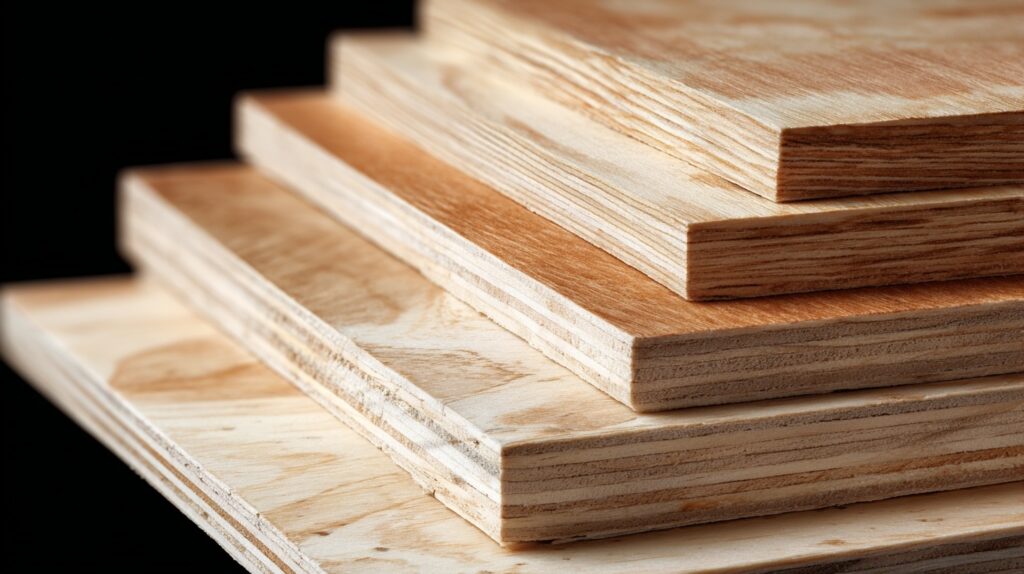
Medium Density Fiberboard (MDF)
MDF is made from compressed wood fibers with resin, offering a smooth surface perfect for painting.
Pros of MDF
Smooth Surface: Ideal for painting.
Stable: Less prone to warping.
Affordable: Cheaper than plywood.
Cons of MDF
Not Very Strong: Best for light-duty furniture.
Heavy: More challenging to work with.
Moisture Sensitivity: Can swell in humid conditions.
Best Uses for MDF
Cabinet doors, trim, and decorative pieces.
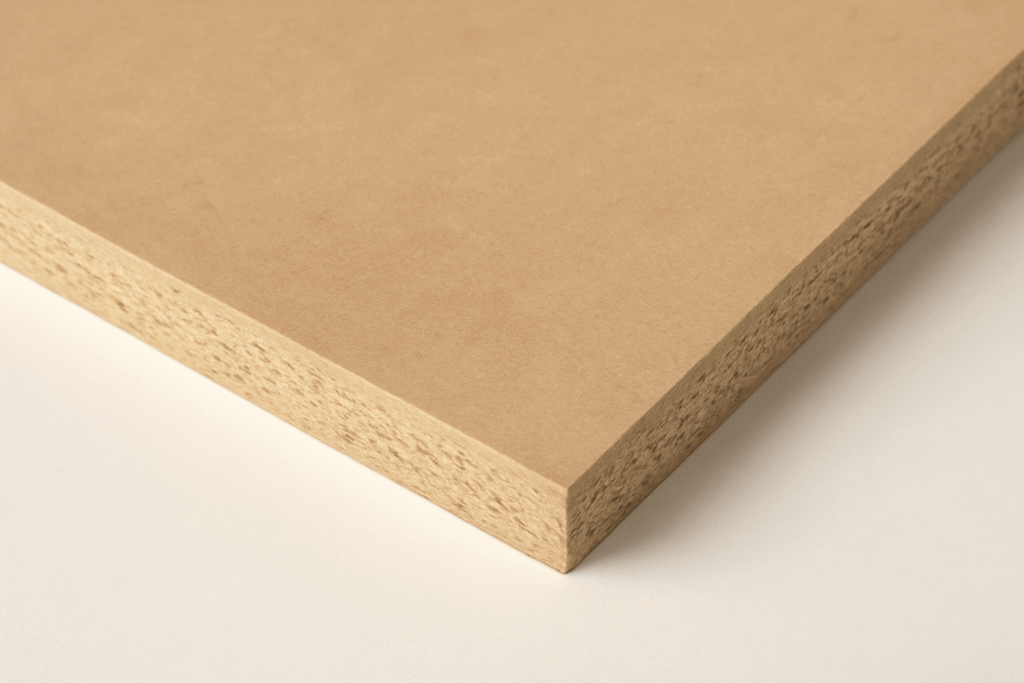
Solid Wood
Solid wood is natural wood, prized for its durability and beauty.
Pros of Solid Wood
Strong and Durable: Ideal for heavy-duty furniture.
Natural Aesthetic: Offers unique grain patterns and colors.
Timeless: Long-lasting and high-quality.
Cons of Solid Wood
Expensive: Higher cost than engineered woods.
Moisture Sensitive: Can expand or contract with humidity.
Best Uses for Solid Wood
High-end custom furniture like dining tables and custom cabinetry.
Oriented Strand Board (OSB)
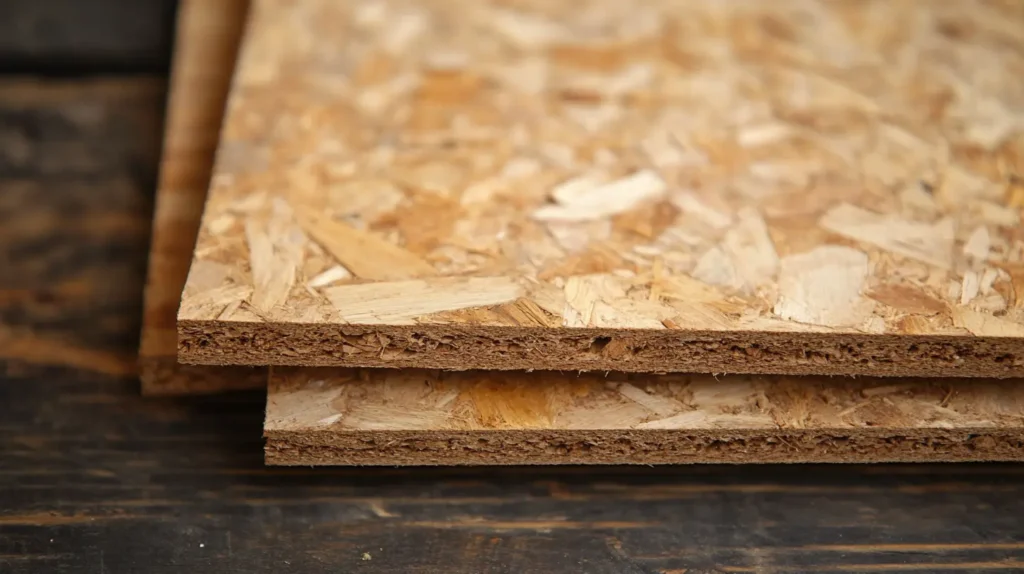
OSB is made from wood strands bonded with resin, often used in structural applications.
Pros of OSB
Affordable: One of the cheapest options.
Strong: Suitable for structural uses.
Cons of OSB
Rough Appearance: Not suitable for visible parts.
Limited Aesthetic Appeal: Better for functional, hidden areas.
Best Uses for OSB
Building materials like flooring, walls, and roofs.
Combining Different Wood Materials for Performance and Cost Balance
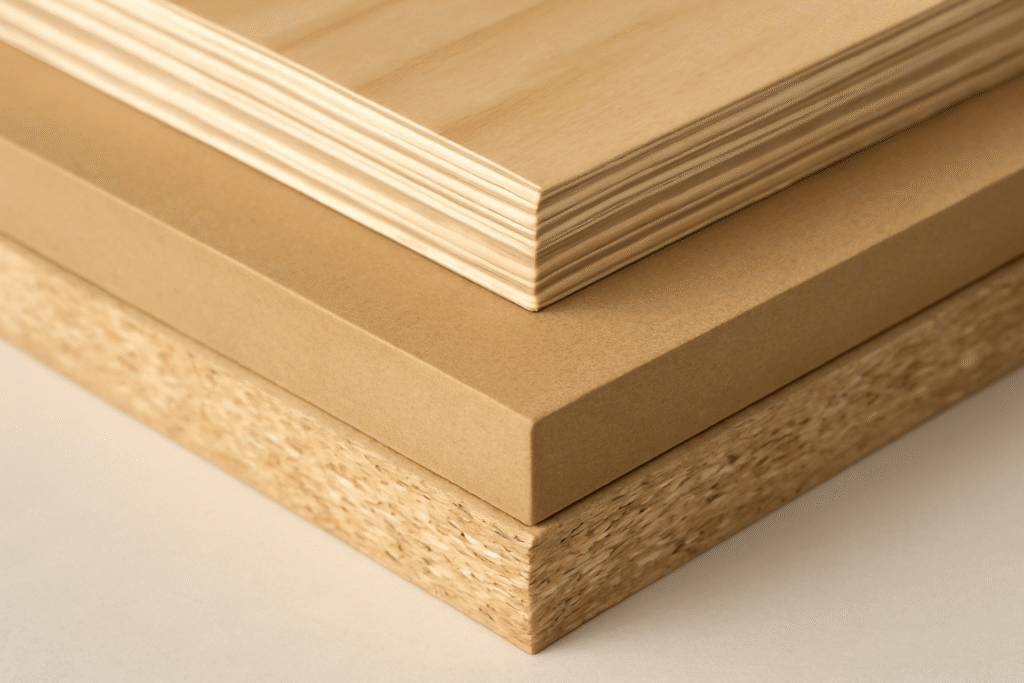
When designing furniture, one of the best ways to balance cost, strength, and aesthetics is by combining different wood materials. Instead of using a single material, mixing particle board, plywood, MDF, solid wood, and OSB in strategic areas allows you to create functional, durable, and cost-effective furniture.
Practical Combinations of Materials
1. Cabinet Construction
Frame: Use particle board for the cabinet’s internal structure to save on costs.
Doors and Drawer Fronts: Choose plywood for durability and aesthetic appeal, providing strength for visible parts.
2. Bookshelves and Desks
Shelves: Use particle board for affordable and lightweight shelves.
Legs and Supports: Opt for solid wood or plywood for strength and stability.
3. TV Stands
Internal Structure: Use OSB or particle board for non-visible areas to keep costs low.
Exposed Surfaces: Plywood or MDF can be used for a polished, durable finish on visible parts.
4. Custom Furniture
Exterior: Use solid wood or plywood for high-end finishes and structural integrity.
Interior: Choose MDF or particle board for internal components like shelves or panels, offering a smooth, affordable solution.
Benefits of Combining Materials
Cost Efficiency: Save money by using particle board in the frame or internal parts while investing in more durable materials like plywood for the exposed parts.
Strength Where Needed: Place stronger materials like plywood or solid wood in areas that bear weight or are subject to wear.
Design Flexibility: Combining materials allows you to create a unique aesthetic while keeping the budget under control.
Conclusion
When choosing between particle board vs plywood, the decision should be based on your specific needs, budget, and the application. Particle board is perfect for budget-friendly, light-use pieces, while plywood offers durability and strength for high-use or moisture-exposed furniture.
However, by combining particle board with plywood, MDF, or solid wood, you can create strong, beautiful, and affordable furniture that strikes the perfect balance between cost and performance. Whether for custom kitchen cabinets, bookshelves, or an office desk, a mixed-material approach ensures you get the best of both worlds.
Can I use particle board for kitchen cabinets?
While particle board is cost-effective, it is not the best choice for kitchen cabinets. Kitchens are high-moisture environments, and particle board can swell and break apart when exposed to water. If you are looking for durability and moisture resistance, it’s better to use plywood for your cabinet structure and particle board for less visible parts like the back or internal shelving.
What are the best materials for kitchen furniture?
For kitchen furniture, especially cabinets, plywood is the best material due to its strength, moisture resistance, and durability. MDF can also be used for cabinet doors because of its smooth surface, while particle board can be used for internal components or where it’s not exposed to moisture. For high-end custom furniture, solid wood may be an option to consider, as it offers natural beauty and strength.
Can I paint particle board or plywood?
Yes, both particle board and plywood can be painted, but the result may vary. Plywood is easier to paint and can be finished to a smooth surface, while particle board may require a primer to achieve a good finish. MDF, with its smooth, dense surface, is often preferred for painting, as it provides a flawless finish.
How do I clean particle board and plywood furniture?
Cleaning particle board and plywood furniture is straightforward, but it’s important to avoid excessive moisture. For particle board, wipe with a dry or slightly damp cloth to prevent the material from swelling. For plywood, you can use a damp cloth, but always dry the surface immediately to avoid moisture penetration. Avoid harsh chemicals, as they can damage the finish.
What is the lifespan of particle board and plywood?
The lifespan of particle board furniture typically ranges from 5 to 10 years, depending on usage and exposure to moisture. It’s more prone to damage in humid environments or with heavy use. On the other hand, plywood is more durable and can last 15-20 years or more with proper care, making it a better choice for long-lasting furniture, especially in high-use areas like kitchens and bathrooms.
Is solid wood more durable than plywood and particle board?
Yes, solid wood is significantly more durable than both plywood and particle board. It is resistant to wear and tear and can last for generations with proper care. While plywood is strong and can withstand pressure, solid wood is still the best choice for heirloom-quality furniture that will last a lifetime.
Related posts:
- Custom Plywood Kitchen Cabinets: Pricing, Benefits, and Key Considerations
- Custom Kitchen Carcass Solutions for Durable and Stylish Kitchens
- What’s the Best Material for Custom Cabinets in Indonesia?
- 2025 Custom Kitchen Cabinet Trends Research Report
- Ultimate Guide to Kitchen Cabinet Storage Solutions and Layout Efficiency
